on the mend
I spend a lot of time mending my clothes.
Now: I am not particularly gifted with needle and thread. My solutions to textile damage are invariably . . . chunky, and I color-match with a great deal of artistic license.
My mother, who has a bachelor’s degree in textiles and clothing design and sewed her own (stylish!) clothing through high school and college (culminating with her beautiful wedding dress) audibly bites her tongue when I show her my little projects.
(I want everyone to know that my mom DID send me to summer sewing classes and she WOULD STILL teach me to use a sewing machine if I asked.)
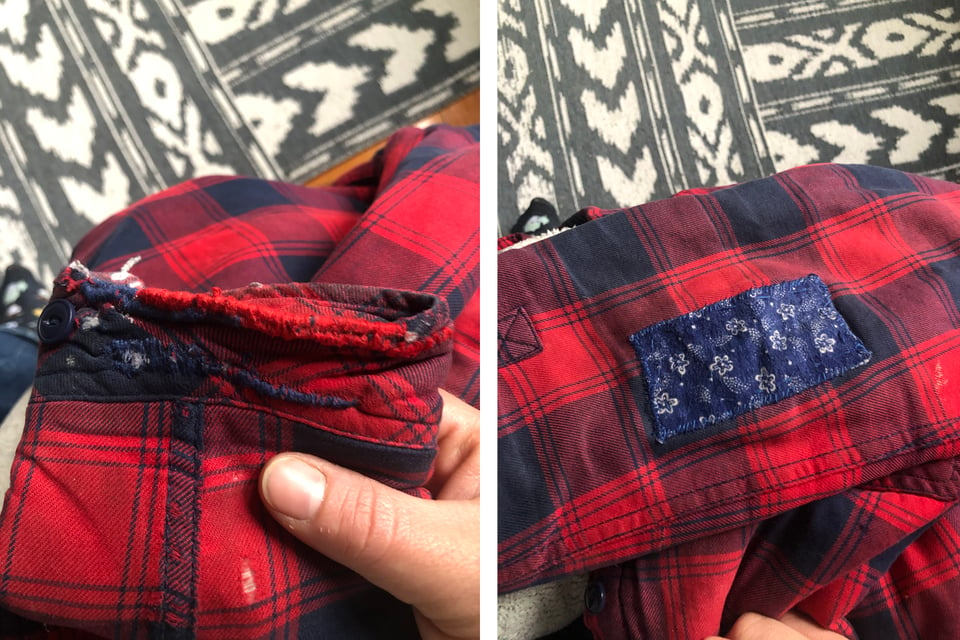
I got into the habit of aggressively mending my clothes when I was a stocky American in Swiss grad school, walking ten miles a day and unable to buy a pair of pants which would go over my ass in any nearby store. The inside thighs of my jeans got SHREDDED, y’all. My mending method of choice was to iron patches over the shredded portion and then quilt them in place with dense lines of parallel or spiraling stitching.
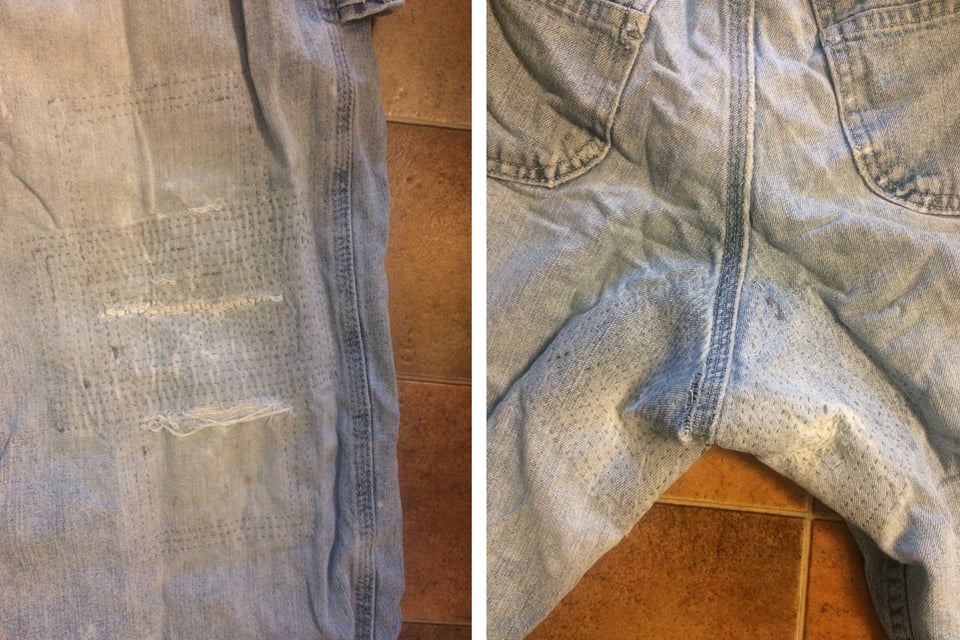
A few years after grad school, I embarked on eight months of farmwork in various European countries with the One True Sweater (which I finished knitting on the plane to Copenhagen), one pair of jeans on my body, and one pair of jeans in my bag. By the time I returned both pairs were about 25% patch, the thighs and the knees quilted with extra layers of fabric.
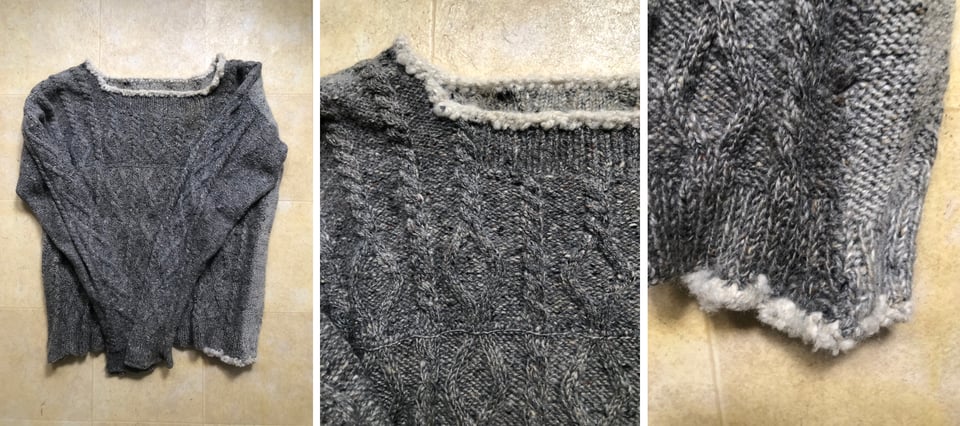
I cannot pretend that today, in May 2025, that my practice of mending still reflects necessity. I make a reasonable amount of money and I work in a place that sells cheap clothes, many of which are sized to fit stocky Americans.
But, I hate buying new clothes. I hate the most basic process of taking off and putting on, the fabric scraping over my skin like slate over slate. I hate that very few clothes are made for my body. I hate the preponderance of low-quality, slimy fabrics. NATURAL FIBER OR DEATH.
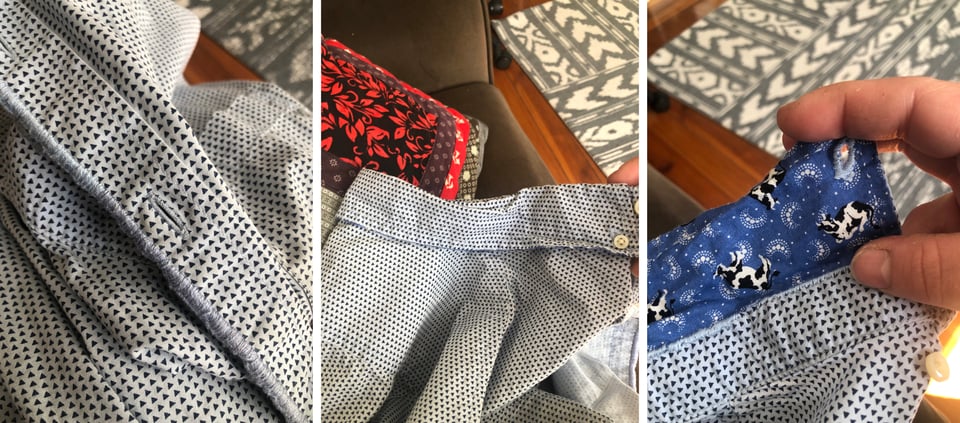
Even that is not the full truth. My desire to not put myself through the ordeal of acquiring new clothes is matched — overwhelmed — overpowered — by my distress over throwing away old clothes.

My maternal grandmother turned 92 this year, and only now has moved into a retirement home. Her new apartment is a mile from where one of the houses she lived in as a child stood, a house which at that time had no running water, no appliances, and a chaotic relationship with regular income. Her mother, my great-grandmother, worked steadily in factories sewing sportswear and upholstery and budgeted with a scalpel to buy a sausage here and there, cabbages, raisins (but only at Christmas.)
My grandma is an amazing cook, but her mother didn’t teach her, because there was rarely food in the house to teach with. Instead: her mother taught her to sew. My grandmother made every gift she has ever given me: a beautiful baby quilt, tiny soft finger puppets, little stuffed mice and cats, an American Girl doll dress.
You can probably make some inferences about my great-grandfather from the gaps in this story, and there are generational curses which lay heavy for decades after; but there are other shadows which lace themselves down through the years, actions we keep echoing because they saved us once — twice — thrice — maybe once more. Maybe try it once more.
My grandmother is a gifted textile artist (her quilts are now dispersed all over southern Iowa), but there was always, also, a stack of jeans waiting to be repaired next to her green sewing machine. First they belonged to my grandfather, ripped up when he was out building fence; then, after he passed, the jeans belonged to neighboring farmers, relatives, a whole parade of individuals my grandma volunteered to help.
My mother also has a stack of jeans next to her sewing machine: mine, my brother’s, my niece’s.
You can teach your children to sew as your mother taught you, and your children will try to pass on that same urgency to their own children: you need to know this to survive. This is how we have survived.
What you will not teach them, and what they will learn, is: this is how we smuggle in beauty, in places and times where no one can afford beauty. This is how we will hold our memories, our loved ones, all the places we have been and the things we have done, close to our skin, in times and places when it is hard to feel like there is a future.
I am really bad at throwing away clothes. I could make something out of this, I say to myself. By the time I get done with a garment, it’s shredded, discolored, hanging from the seams. I can’t in good conscience pass on these shreds, which I have poured so much time and effort into, to anyone else, because they are deeply gross. Who else is going to appreciate my nasty sweater, knit with my own hands in a pattern I made up on the fly, repaired with wool from Paladin the friendly ram? What am I doing?
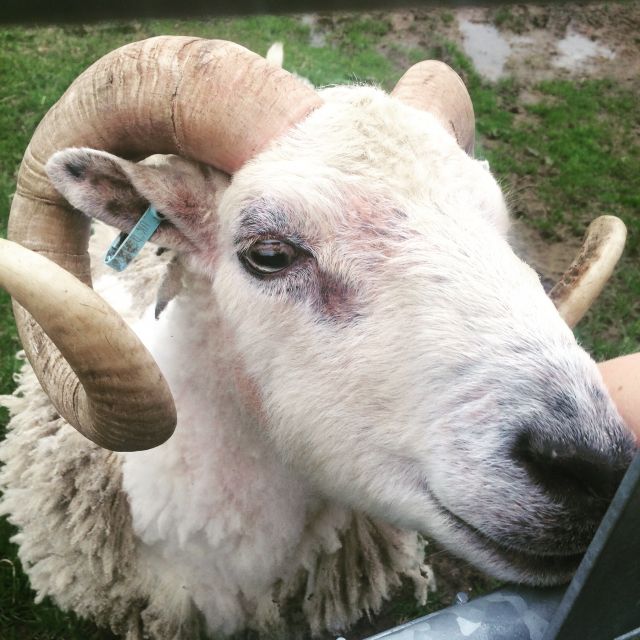
I mend not to save money but as religious practice. That word, religious, is revolting, but what better word is there? For a ritual performed to connect a person to their ancestors, to the reality of their present body, to the innate value of other humans and the things they make? I practice mending because I believe the things we create will not last forever, but they are not disposable and should not be treated as such. I mend my shirts because a woman in Bangalore whose name I do not know spent thirty minutes assembling each one with lightning speed and skill, top-stitching the collar and the plackets so they don’t fold in weird places. I mend because Catherine Vavra, née Weitzel, made sure her kids were fed with her sewing machine. I mend because I grew up in a house filled with quilts assembled from scraps, salvaged bits and pieces, and they are beautiful.
This is not a newsletter about tariffs.
I started thinking intensely about my own textile heritage (though, to be fair to me, I am kind of always thinking about it) while reading Clare Hunter’s Threads of Life, an eclectic history of the world told through needlework (or an eclectic history of needlework told through world events.) While she uses more binary language around gender than I would prefer, her depiction of how marginalized and disenfranchised people can find community and identity through textiles resonated so deeply with me that my bones hurt.
If you’d like to participate in my giveaway of three paperback copies of Andrea Lawlor’s Paul Takes the Form of a Mortal Girl, you can find the form for that here.
I hope all of you are holding up and holding out, and that you find the practice which steadies your hand.
Sharon
Add a comment